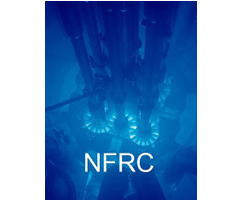
 






.gif)



|
Signature Sponsor


By Clinton E. Crackel, Co-Founder and Co-Chairman, Nuclear Fuels Reprocessing Coalition
January 1, 2018 - Manufacturers of electronic and other highly technical equipment utilize rare earths as part of the manufacturing process. Even though the amount of rare earths used in the various equipment components is nominal, the rare-earth elements are essential to the equipment’s performance. Rare earths are utilized in both civilian and military technologies, including green technologies such as wind turbines and advanced battery systems.
The U.S. Department of Energy has identified the critical rare earths used in the manufacturing processes for both the short term and long term. They include neodymium (Nd), europium (Eu), terbium (Tb), dysprosium (Dy) and yttrium (Y). The element praseodymium (Pr) can also be included because of its ability to be substituted for Nd in high-intensity permanent magnets. The other rare-earth elements include cerium (Ce), erbium (Er), gadolinium (Gd), holmium (Ho), lanthanum (La), lutetium (Lu), promethium (Pm), samarium (Sm), scandium (Sc), thulium (Tm) and ytterbium (Yb).
China became the world's principal producer of rare earths in the 1990s. Because China sold rare earths at very low prices, other rare earth providers in other countries were unable to compete. China accounted for more than 95% of world rare earth production by 2000 even though the pollution to the environment around the Chinese rare earth production facilities is horrendous.
According to an article in Air Force Magazine by Peter Grier, Beijing moved to exert more central control, rationalizing production and taxing and restricting exports. In July 2010 China announced it would reduce its exports of rare earths for the second half of the year by 70% over the previous year’s levels. Such actions by Beijing recently caused rare earth prices to rise around 65% from early 2016 to fall 2017.
With increasing economic and military uncertainties in Asia, we can’t continue to rely on China to provide rare earths for the manufacture of technically advanced medical and defense systems. We have to be capable of providing rare earths for the manufacture of such systems from U.S. sources, which has not been done since the 1980s when the Mountain Pass rare earth mine in California closed down when its owner filed for chapter 11 bankruptcy protections. By that time the mine was also running out of storage space for the process wastes.
Granted, the Rare Element Resources, Limited’s Bear Lodge Critical Rare Earth Project for providing rare earths, located in northeast Wyoming, is currently in the planning stage. However, construction has not started because, according to the company’s Bear Lodge Project web page, the draft Environmental Impact Statement (EIS) is now suspended and is currently on hold until markets support resumption of the project.
Perhaps one solution to the ongoing lack of a U.S. supplier of rare earths is to incorporate a rare earths extraction process immediately downstream of the coal pulverizing operation of a Fischer-Tropsch coal to liquid synthetic fuel processing facility. Also, instead of disposing of the extraction process wastes to a surface retention basin of other form of storage, even though the wastes are deemed hazardous, perhaps there are ways of treating the wastes so they could be diverted back to the liquification phase for subsequent conversion to synthetic fuels.
According to Mr. Grier, U.S. national laboratories are studying the possibility of extracting rare-earth elements from coal and coal by-products. The U.S. coal reserves are estimated to contain about a 1,000-year supply of rare earths based on current consumption levels.
Contrary to the ongoing efforts of the petroleum industry to increase U.S. crude oil output through increased drilling, and fracking for shale oil, crude oil is not a source for providing rare earths.
On the other hand, coal is a viable source for providing rare earths. In addition to coal being able to provide a practical alternative fuel for all American vehicles powered by internal combustion engines without costly conversions, coal can also come to the forefront of the energy arena in terms of serving as a long-term supplier of rare-earth elements.
Clinton Crackel |
 











|
.png)